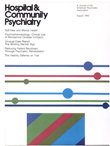The Insanity Defense on Trial
Abstract
What was once a great romance between law and psychiatry has ended in disenchantment on both sides. Legal rulings during the 1950s intended to increase the psychiatric presence in the courtroom have been repudiated, and there is now a mood to abolish the traditional insanity defense. Abolitionists charge that the insanity defense has been successfully employed by large numbers of dangerous criminals to avoid punishment, that psychiatrists are dishonest because they serve as expert witnesses for both sides, and that the existence of the defense is evidence of a permissive society that coddles violent criminals. Each of these charges is rebutted by the author, who contends that until recently the insanity defense was a profound hypocrisy: the courts found the defendants not guilty by reason of insanity and then relied on psychiatry to confine them for the rest of their lives. But legal reforms and changes in psychiatric practice during the past 20 years have made it more difficult to confine such persons, and thus the insanity defense has real meaning for the first time. The author believes that despite the loss of protection to society, there are important legal and moral barriers to abolishing the insanity defense.
Access content
To read the fulltext, please use one of the options below to sign in or purchase access.- Personal login
- Institutional Login
- Sign in via OpenAthens
- Register for access
-
Please login/register if you wish to pair your device and check access availability.
Not a subscriber?
PsychiatryOnline subscription options offer access to the DSM-5 library, books, journals, CME, and patient resources. This all-in-one virtual library provides psychiatrists and mental health professionals with key resources for diagnosis, treatment, research, and professional development.
Need more help? PsychiatryOnline Customer Service may be reached by emailing [email protected] or by calling 800-368-5777 (in the U.S.) or 703-907-7322 (outside the U.S.).



